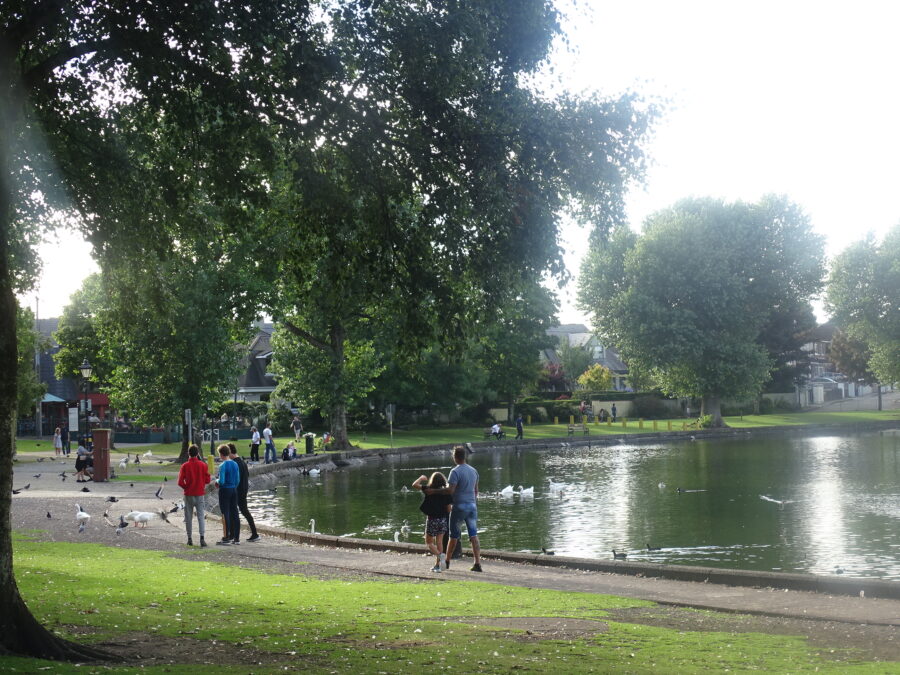
Kieran’s Our City, Our Town Article,
Cork Independent, 1 June 2023
Kieran’s June Historical Walking Tours
My summer walking tours of Cork’s historic suburbs and parts of the city centre continue for June. To encourage engagement, the tours have been free for many years. There is no booking required. Just show up on the day.
Tuesday evening, 6 June 2023, Cork and the River Lee, An Introduction to the Historical Development of Cork City; meet at the National Monument, Grand Parade, 6.30pm, in association with the Cork Harbour Festival (free, 2 hours, no booking required for all tours).
Cork City city possesses a unique character derived from a combination of its plan, topography, built fabric and its location on the lowest crossing point of the river Lee as it meets the tidal estuary and the second largest natural harbour in the world. Indeed, it is also a city that is unique among other cities, it is the only one which has experienced all phases of Irish urban development, from circa 600AD to the present day. This tour explores the city’s earliest historical phases and its connection with the riverscape.
Sunday afternoon, 11 June 2023, Cork South Docklands; Discover the history of the city’s docks, from quayside stories to the City Park Race Course and Albert Road; meet at Kennedy Park, Victoria Road, 2pm, in association with the Cork Harbour Festival (free, duration: two hours, no booking required).
Ever since Viking age time over 1,000 years ago, boats of all different shapes and sizes have been coming in and out of Cork’s riverine and harbour region continuing a very long legacy of trade. Port trade was the engine in Cork’s development. By the nineteenth century, the port of Cork was the leading commercial port of Ireland.
Two hundred years ago, considerable tonnage could navigate the North Channel, as far as St. Patrick’s Bridge, and on the South Channel as far as Parliament Bridge. St. Patrick’s Bridge and Merchants’ Quay were the busiest areas, being almost lined daily with shipping. Near the extremity of the former on Penrose Quay was situated the splendid building of the Cork Steamship Company, whose boats loaded and discharged their alongside the quay.
Through its docks, Cork was connected to the outside world – the international and small town – ambitious in its ventures linked to a world of adventure and exploration. The tour also explores the rich built heritage from the Custom House to Albert Road housing to railways to tram depots.
Tuesday evening, 13 June 2022, The Lough and its Curiosities; meet at green area at northern green of The Lough, entrance of Lough Road to The Lough, Lough Church end; 6.30pm (free, duration: two hours, no booking required)
This walking tour circles the Lough and explores the area’s origins and histories. The Lough is part of the city’s necklace of key amenities. It attracts people from across the city. Many local historians have written on this district plus areas like Glasheen, Ballyphehane and Togher. This fresh water 18-acre lake was created by the erosion of moving ice during one of the Glacial periods, sometime between 10,000 and 2 million years ago. It rests on a bed of limestone running east and west about 60ft above sea level.
In 1659 the population in the immediate vicinity of The Lough consisted of four persons only, all Irish in descent. Some decades later in 1690 during the Williamite Campaign in Ireland a detachment of King William of Orange‘s army re-grouped at The Lough prior to pressing the assault which became known as the Siege of Cork.
In the early eighteenth century, the lands around the lake were deemed commonage lands and rented out by the Corporation of Cork. Indeed, from 21 October 1732all “black cattle” that stood in The Lough or on the ground about The Lough, in order to cool for slaughtering, had to pay one penny for every head of such black cattle, a halfpenny for every pig or sheep. No Freeman at large was liable to pay any of the duties as long the cattle belonged to such Freeman.
In such a corner of the city, stories abound ranging from duels, ice-skating, market gardening, Victorian nurseries and legend making as well as housing and church sites.
Sunday afternoon, 18 June 2022, Blackpool: Its History and Heritage; meet at square on St Mary’s Road, opp North Cathedral, 2pm, (free, two hours, no booking required).
The walking tour weaves its way from the North Mon into Blackpool, Shandon and Gurranbraher highlighting nineteenth century life in this corner of Cork from education to housing to politics, to religion, to industry and to social life itself. Blackpool was the scene of industry in Cork in the eighteenth and nineteenth centuries for industries such as tanning through big names such as Dunn’s Tannery and distilling through families such as the Hewitts. The leather industryat one vibrant in Blackpool with no fewer than 46 tanyards at work there in 1837 giving employment to over 700 hands and tanning on average 110,000 hides annually.
Blackpool also has messages about public relief projects in the form of the former Poor House site at Murphy’s Brewery to Madden’s Buildings to highlighting the work of Ireland’s social reformers through street names such as William O’Brien, Gerald Griffin, Daniel O’Connell and Tomás McCurtain. All these messages inject the place with memories of difficult times but also times of determination to survive against the odds.
Caption:
1204a. The Lough, present day – one of Kieran’s walking tour destinations for June (picture: Kieran McCarthy).